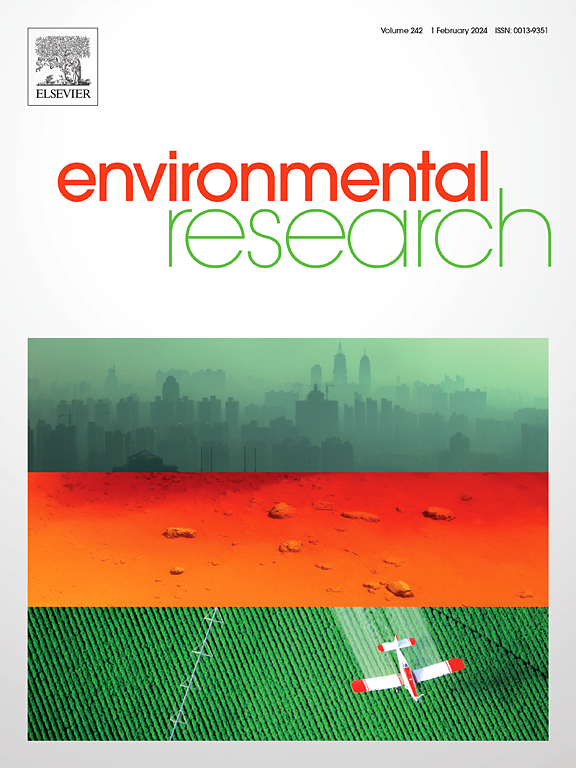An innovative method for identifying aquatic environmental characteristics: construction of water quality fingerprint spectrum and combination with two-dimensional correlation spectroscopy analysis
IF 7.7
2区 环境科学与生态学
Q1 ENVIRONMENTAL SCIENCES
引用次数: 0
Abstract
With the deterioration of water quality and explosion of data scale, the diversification and complication of water quality analysis tasks are increasing, which require advanced analysis and visualization methods. Current multivariate statistical methods face challenges in processing multi-dimensional data and conducting causal analysis of fluctuations in water quality over temporal or spatial variations. In this study, a water quality fingerprint spectrum was constructed to perform multiscale and large-volume dataset. Based on the water quality fingerprint spectrum, a workflow of water quality was proposed for exploring the priority control regions, periods, and parameters were identified, and the key factors and effect pathways of response mechanisms, which consisted of three modules: data preparation, data interpretation, and causal analysis. In this study, we constructed a water quality fingerprint spectrum based on 792 water quality data from Lake Shahu as an example to present the methodology. The results showed that CODCr, TN, and TP were identified as priority control parameters of Lake Shahu, which were mainly affected by tourism activities and water replenishment. According to the results to conduct causal analysis, we found that the water replenishment could directly improve water quality (total effect: −0.464) by inhibition of algal growth and dilution of CODCr and TP concentrations, while tourism activities do the opposite (total effect: 0.562). The innovative analysis method conducted a thorough examination of fluctuations in water quality over spatio-temporal variations and paved the way between data and practical requirements in future works of water quality analysis and management.
一种识别水体环境特征的创新方法:构建水质指纹图谱并结合二维相关光谱分析
随着水质的恶化和数据规模的爆炸式增长,水质分析任务的多样化和复杂性日益增加,需要先进的分析和可视化方法。当前的多变量统计方法在处理多维数据和对时空变化的水质波动进行因果分析方面面临挑战。本研究构建了水质指纹图谱,实现了多尺度、大容量的数据集。基于水质指纹图谱,提出了探索水质优先控制区域、周期和参数的工作流程,确定了响应机制的关键因素和影响途径,包括数据准备、数据解释和因果分析三个模块。本研究以沙湖792份水质数据为例,构建了水质指纹图谱。结果表明:CODCr、TN和TP是沙湖的优先控制参数,主要受旅游活动和补给水量的影响;根据结果进行因果分析,我们发现补水可以通过抑制藻类生长和稀释CODCr和TP浓度直接改善水质(总效应为−0.464),而旅游活动则相反(总效应为0.562)。创新的分析方法深入考察了时空变化下的水质波动,为今后水质分析与管理工作的数据与实际需求之间的联系铺平了道路。
本文章由计算机程序翻译,如有差异,请以英文原文为准。
求助全文
约1分钟内获得全文
求助全文
来源期刊

Environmental Research
环境科学-公共卫生、环境卫生与职业卫生
CiteScore
12.60
自引率
8.40%
发文量
2480
审稿时长
4.7 months
期刊介绍:
The Environmental Research journal presents a broad range of interdisciplinary research, focused on addressing worldwide environmental concerns and featuring innovative findings. Our publication strives to explore relevant anthropogenic issues across various environmental sectors, showcasing practical applications in real-life settings.
 求助内容:
求助内容: 应助结果提醒方式:
应助结果提醒方式:


